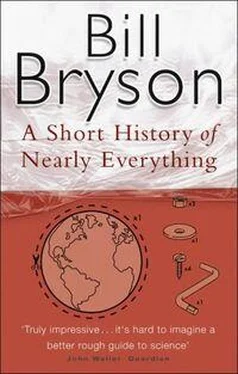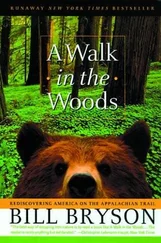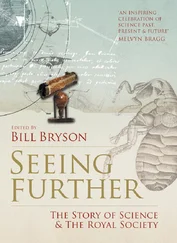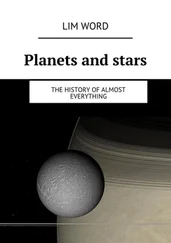“There’s something satisfying, I think,” Evans said, “about the idea of light traveling for millions of years through space and just at the right moment as it reaches Earth someone looks at the right bit of sky and sees it. It just seems right that an event of that magnitude should be witnessed.”
Supernovae do much more than simply impart a sense of wonder. They come in several types (one of them discovered by Evans) and of these one in particular, known as a Ia supernova, is important to astronomy because it always explodes in the same way, with the same critical mass. For this reason it can be used as a standard candle to measure the expansion rate of the universe.
In 1987 Saul Perlmutter at the Lawrence Berkeley lab in California, needing more Ia supernovae than visual sightings were providing, set out to find a more systematic method of searching for them. Perlmutter devised a nifty system using sophisticated computers and charge-coupled devices-in essence, really good digital cameras. It automated supernova hunting. Telescopes could now take thousands of pictures and let a computer detect the telltale bright spots that marked a supernova explosion. In five years, with the new technique, Perlmutter and his colleagues at Berkeley found forty-two supernovae. Now even amateurs are finding supernovae with charge-coupled devices. “With CCDs you can aim a telescope at the sky and go watch television,” Evans said with a touch of dismay. “It took all the romance out of it.”
I asked him if he was tempted to adopt the new technology. “Oh, no,” he said, “I enjoy my way too much. Besides”-he gave a nod at the photo of his latest supernova and smiled-“I can still beat them sometimes.”
The question that naturally occurs is “What would it be like if a star exploded nearby?” Our nearest stellar neighbor, as we have seen, is Alpha Centauri, 4.3 light-years away. I had imagined that if there were an explosion there we would have 4.3 years to watch the light of this magnificent event spreading across the sky, as if tipped from a giant can. What would it be like if we had four years and four months to watch an inescapable doom advancing toward us, knowing that when it finally arrived it would blow the skin right off our bones? Would people still go to work? Would farmers plant crops? Would anyone deliver them to the stores?
Weeks later, back in the town in New Hampshire where I live, I put these questions to John Thorstensen, an astronomer at Dartmouth College. “Oh no,” he said, laughing. “The news of such an event travels out at the speed of light, but so does the destructiveness, so you’d learn about it and die from it in the same instant. But don’t worry because it’s not going to happen.”
For the blast of a supernova explosion to kill you, he explained, you would have to be “ridiculously close”-probably within ten light-years or so. “The danger would be various types of radiation-cosmic rays and so on.” These would produce fabulous auroras, shimmering curtains of spooky light that would fill the whole sky. This would not be a good thing. Anything potent enough to put on such a show could well blow away the magnetosphere, the magnetic zone high above the Earth that normally protects us from ultraviolet rays and other cosmic assaults. Without the magnetosphere anyone unfortunate enough to step into sunlight would pretty quickly take on the appearance of, let us say, an overcooked pizza.
The reason we can be reasonably confident that such an event won’t happen in our corner of the galaxy, Thorstensen said, is that it takes a particular kind of star to make a supernova in the first place. A candidate star must be ten to twenty times as massive as our own Sun and “we don’t have anything of the requisite size that’s that close. The universe is a mercifully big place.” The nearest likely candidate he added, is Betelgeuse, whose various sputterings have for years suggested that something interestingly unstable is going on there. But Betelgeuse is fifty thousand light-years away.
Only half a dozen times in recorded history have supernovae been close enough to be visible to the naked eye. One was a blast in 1054 that created the Crab Nebula. Another, in 1604, made a star bright enough to be seen during the day for over three weeks. The most recent was in 1987, when a supernova flared in a zone of the cosmos known as the Large Magellanic Cloud, but that was only barely visible and only in the southern hemisphere-and it was a comfortably safe 169,000 light-years away.
Supernovae are significant to us in one other decidedly central way. Without them we wouldn’t be here. You will recall the cosmological conundrum with which we ended the first chapter-that the Big Bang created lots of light gases but no heavy elements. Those came later, but for a very long time nobody could figure out how they came later. The problem was that you needed something really hot-hotter even than the middle of the hottest stars-to forge carbon and iron and the other elements without which we would be distressingly immaterial. Supernovae provided the explanation, and it was an English cosmologist almost as singular in manner as Fritz Zwicky who figured it out.
He was a Yorkshireman named Fred Hoyle. Hoyle, who died in 2001, was described in an obituary in Nature as a “cosmologist and controversialist” and both of those he most certainly was. He was, according to Nature ’s obituary, “embroiled in controversy for most of his life” and “put his name to much rubbish.” He claimed, for instance, and without evidence, that the Natural History Museum’s treasured fossil of an Archaeopteryx was a forgery along the lines of the Piltdown hoax, causing much exasperation to the museum’s paleontologists, who had to spend days fielding phone calls from journalists from all over the world. He also believed that Earth was not only seeded by life from space but also by many of its diseases, such as influenza and bubonic plague, and suggested at one point that humans evolved projecting noses with the nostrils underneath as a way of keeping cosmic pathogens from falling into them.
It was he who coined the term “Big Bang,” in a moment of facetiousness, for a radio broadcast in 1952. He pointed out that nothing in our understanding of physics could account for why everything, gathered to a point, would suddenly and dramatically begin to expand. Hoyle favored a steady-state theory in which the universe was constantly expanding and continually creating new matter as it went. Hoyle also realized that if stars imploded they would liberate huge amounts of heat-100 million degrees or more, enough to begin to generate the heavier elements in a process known as nucleosynthesis. In 1957, working with others, Hoyle showed how the heavier elements were formed in supernova explosions. For this work, W. A. Fowler, one of his collaborators, received a Nobel Prize. Hoyle, shamefully, did not.
According to Hoyle’s theory, an exploding star would generate enough heat to create all the new elements and spray them into the cosmos where they would form gaseous clouds-the interstellar medium as it is known-that could eventually coalesce into new solar systems. With the new theories it became possible at last to construct plausible scenarios for how we got here. What we now think we know is this:
About 4.6 billion years ago, a great swirl of gas and dust some 15 billion miles across accumulated in space where we are now and began to aggregate. Virtually all of it-99.9 percent of the mass of the solar system-went to make the Sun. Out of the floating material that was left over, two microscopic grains floated close enough together to be joined by electrostatic forces. This was the moment of conception for our planet. All over the inchoate solar system, the same was happening. Colliding dust grains formed larger and larger clumps. Eventually the clumps grew large enough to be called planetesimals. As these endlessly bumped and collided, they fractured or split or recombined in endless random permutations, but in every encounter there was a winner, and some of the winners grew big enough to dominate the orbit around which they traveled.
Читать дальше












